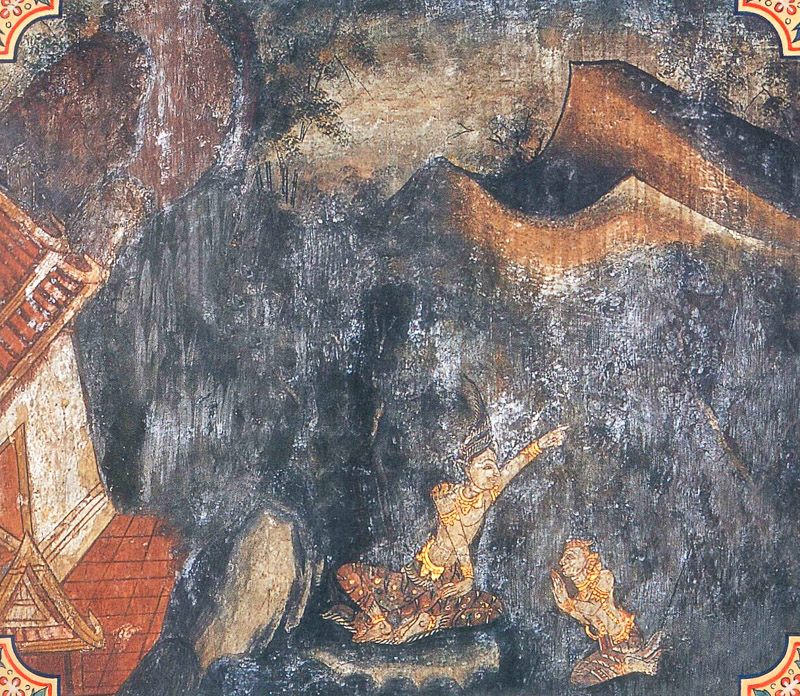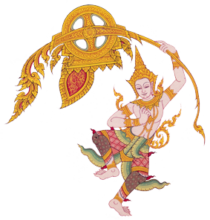
The Bodhisatta was once an ascetic. One rainy season, needing salt and other necessities, he left his Himalayan home and went to the city. The king, impressed by his demeanor, invited him to live under his care in the royal park until it was time to return home.
The king had a bad-tempered, uncontrollable son, reviled by all, and none of the king’s family, councilors, or chaplains could reform him. So the king asked the Bodhisatta to talk to the boy. They took a walk in the park, and when they came upon a tree seedling, the Bodhisatta told the young prince to chew one of the leaves. The taste was so terrible that he cursed and spit it out. In such a small plant the poison was mild, but the boy knew that when the tree grew large, it would become deadly. So he pulled the seedling out of the ground and crushed it. Then the Bodhisatta explained to the prince that the people of the kingdom felt the same way about him, and they would never allow someone so fierce and hot-blooded to take the throne. Eventually someone would “uproot” him and force him into exile. The lesson entered the prince’s heart, and his attitude changed immediately for the better. He became humble and kind, and after his father’s death he was a wise and charitable king.
In the Lifetime of the Buddha
The prince who tasted the poisonous leaf was an earlier birth of a young prince who was cruel and uncontrollable, like an enraged snake. Nobody in the palace could make him better, so the king took him to hear a lecture from the Buddha. The Buddha told the prince that people who acted like he did were loathed by all and have misery on earth and then again in hell after death; and this cycle of suffering would repeat for many lifetimes. But people who show kindness and do good deeds need not fear hell. The Buddha’s words were so persuasive that the prince was humbled and his heart filled with kindness and love; he was forever after as gentle as a snake with drawn fangs, as a crab with broken claws, and as a bull with broken horns.
When the Buddha heard some of his disciples discussing his incomparable teaching ability, he told them this story so they knew that he had also tamed this boy in the past.
The king was an earlier birth of Ananda, one of the Buddha’s top disciples.
